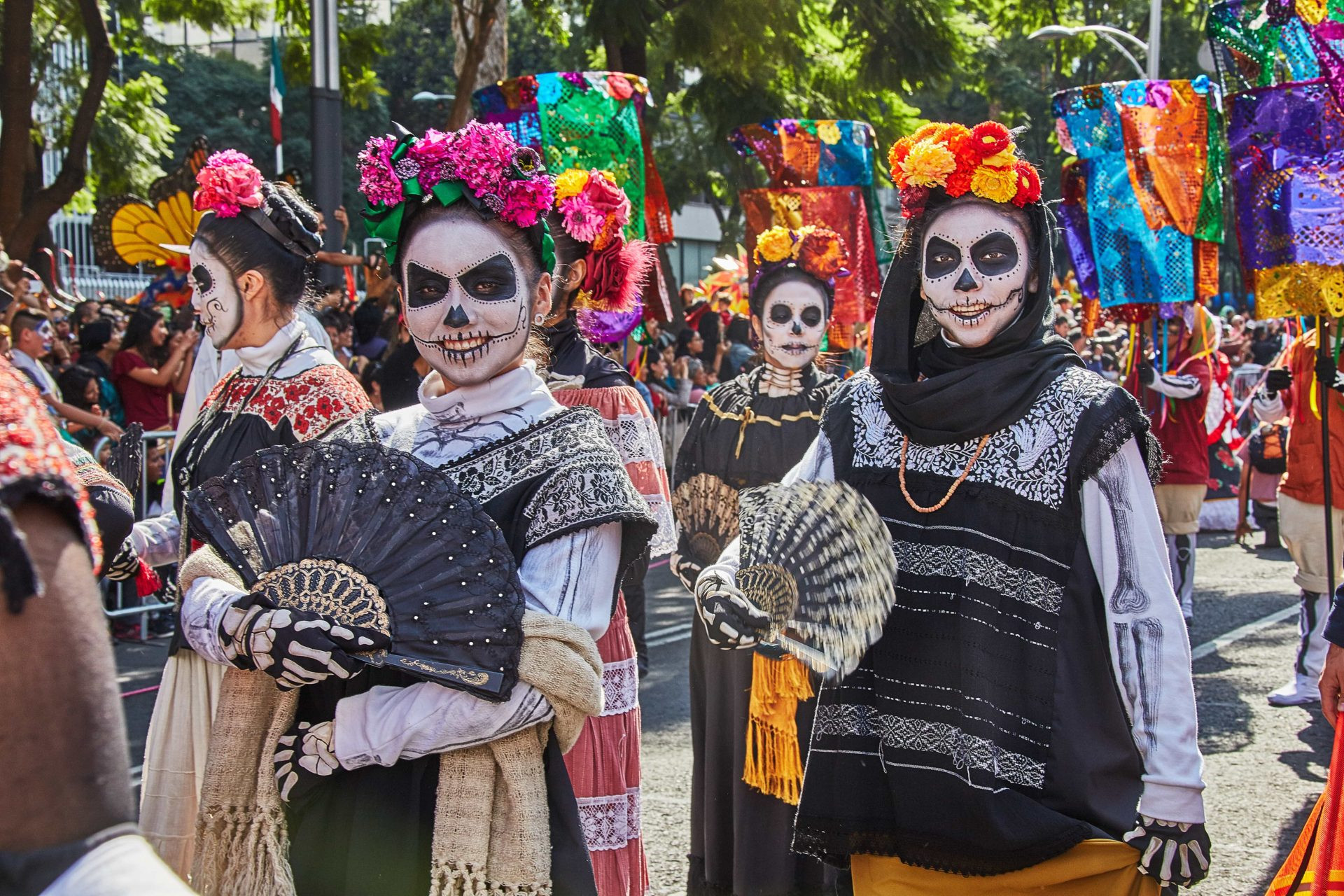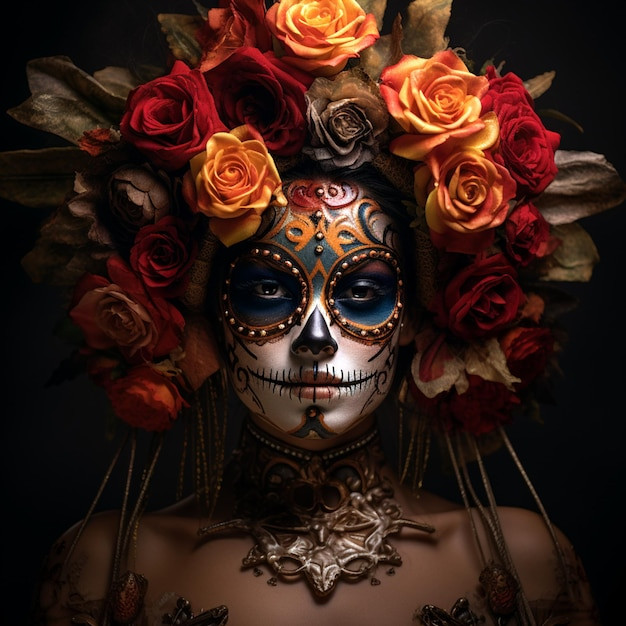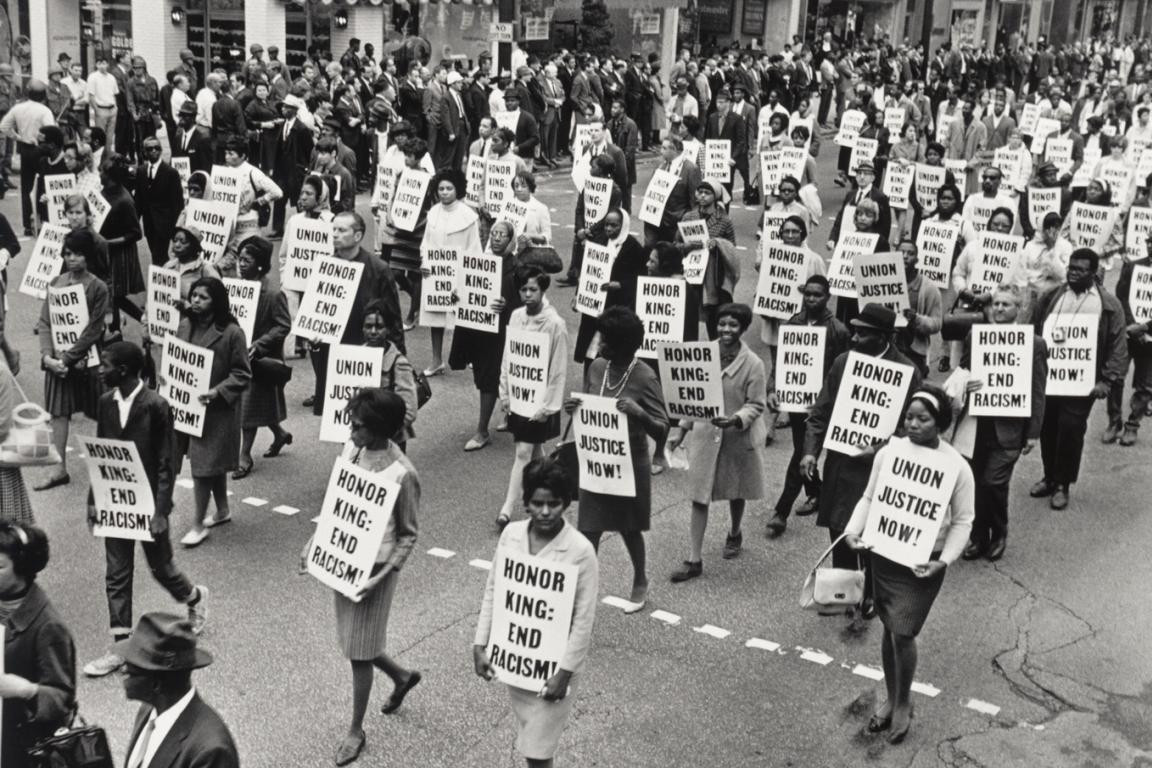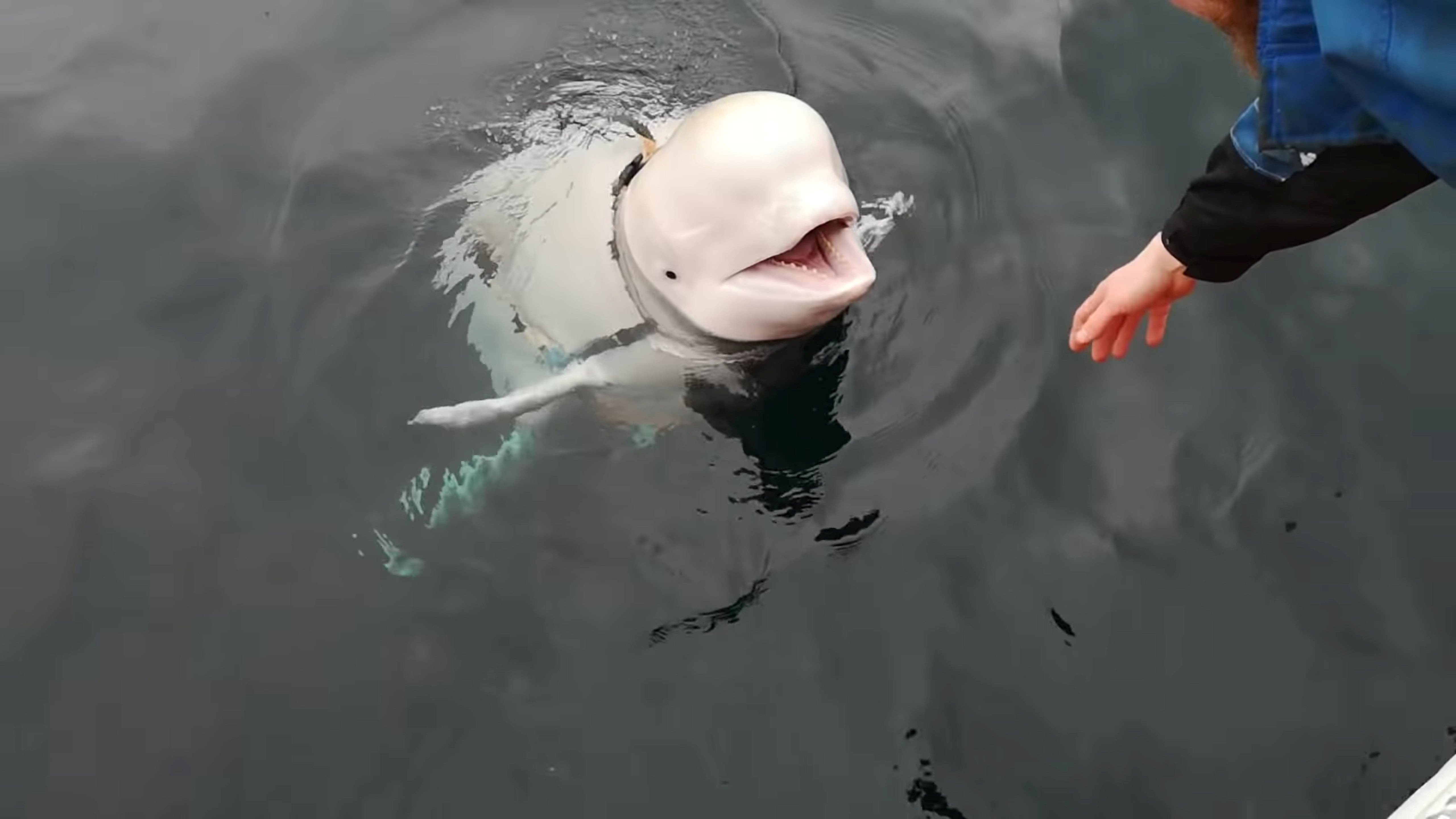Each year, Día de los Muertos, or Day of the Dead, is a celebration that takes place in Mexico and Latin American communities. It dates back more than 3,000 years when the Aztecs and other Mesoamerican societies embraced death as an essential part of existence.
Today, the tradition of honoring the dead continues mainly in Mexico but people all over the world have come to love the exuberance and positive light the day offers, creating traditions of their own.
Día de los Muertos is celebrated on Friday, Nov. 1, and Saturday, Nov. 2. The holiday is marked by two days of festivities that remember loved ones by celebrating their lives rather than mourning them. During this time, it is thought that the veil between the living and the dead is lifted, making it possible for the dead to visit their family and friends.
Over the course the two days, three types of spirits are remembered, beginning with those of children, then adults, and during the final hours of the second day, all.
Origins and Traditions of Día de los Muertos
The roots of Día de los Muertos can be traced back to the ancient Aztec civilization, where death was seen as a natural part of life's cycle. The Aztecs believed that the souls of the departed would return to the world of the living for a brief period each year. This belief led to the development of elaborate rituals and offerings designed to welcome and honor the spirits of the dead.
The celebration of Día de los Muertos is a blend of indigenous traditions and Catholic influences. When Spanish conquistadors arrived in Mexico in the 16th century, they introduced the concept of All Saints Day and All Souls Day, which were observed on November 1st and 2nd, respectively. These Christian holidays gradually merged with the Aztec rituals, giving rise to the modern-day celebration of Día de los Muertos.
The Meaning Behind the Festivities
Día de los Muertos is not a somber or mournful occasion. It is a time for joy, celebration, and remembrance. The focus is on honoring the lives of those who have passed away and celebrating their contributions to the world. The holiday is a testament to the strong cultural heritage of Mexico and Latin American communities, a time for families and friends to come together and share stories, laughter, and memories of loved ones.
Key Elements of the Celebration
The celebration of Día de los Muertos is characterized by various traditions and elements that contribute to its unique atmosphere:
Ofrendas (Offerings)
Ofrendas are elaborate altars that are created in homes, schools, businesses, and public spaces to honor the dead. These altars are typically adorned with photos of deceased loved ones, candles, flowers, and traditional foods.
The ofrendas are believed to guide the spirits of the departed back to the land of the living, providing them with sustenance and comfort during their visit. Common offerings include:
-
Marigolds (Cempasúchil): The bright orange marigolds are used to guide the spirits of the deceased back to the ofrendas. The scent of the flowers is believed to be a familiar and comforting one for the spirits.
-
Pan de Muertos (Bread of the Dead): This traditional sweet bread is often shaped in a circular form, resembling a skull. The bread is typically decorated with sugar, almonds, or sesame seeds, and it is believed to represent the deceased’s soul.
-
Food and Drink: The ofrendas are also often decorated with other foods and drinks that were enjoyed by the deceased. This may include tamales, pozole, tequila, mezcal, and other regional specialties.
-
Personal Belongings: Items that were cherished by the deceased, such as photographs, jewelry, books, or other personal items, are also often placed on the ofrendas.
Calaveras (Skulls)
Calaveras, or sugar skulls, are a traditional folk art that is commonly seen during Día de los Muertos. These colorful skulls are made of sugar and decorated with icing, foil, and other embellishments. Calaveras are often inscribed with the names of deceased loved ones and are used as gifts, decorations, or offerings on the ofrendas.
Catrinas
The Catrina is a skeleton figure that is often depicted wearing a lavish gown and hat. The Catrina has become a popular icon of Día de los Muertos, symbolizing elegance and mortality. The Catrina figure is often featured in costumes, decorations, and artwork during the holiday.
Parades and Festivities
Día de los Muertos is a time for celebration and joy. Many communities host parades and festivals featuring traditional music, dance, and costumes. Participants dress up in elaborate costumes, including calaveras and Catrinas, and they often dance and sing in celebration of the holiday.
Visiting Gravesites
Visiting the graves of loved ones is an important part of Día de los Muertos. Families often go to the cemetery to clean and decorate the gravesites, placing flowers, candles, and other offerings on the graves.
A Celebration of Life
Día de los Muertos is a celebration of life, a reminder that death is a natural part of the cycle of life. The holiday encourages us to remember our loved ones who have passed away and celebrate their contributions to the world. It is a time for families and friends to come together and share memories, stories, and laughter, and to honor the enduring bonds that connect us.
Día de los Muertos Around the World
Día de los Muertos is not only celebrated in Mexico and Latin America but has also gained popularity in other parts of the world. Many communities outside of Mexico have embraced the traditions and the spirit of the holiday, hosting their own celebrations and events. The celebration of Día de los Muertos is a testament to the universality of the human experience, the desire to remember and honor those we have lost, and to celebrate the precious gift of life.
A Lasting Legacy
Día de los Muertos is a powerful and moving celebration that transcends cultural boundaries. It is a reminder that death is not an end but a transition, and that the memories of those we love live on in our hearts. The holiday is a vibrant expression of the resilience of the human spirit, a celebration of life, and a testament to the enduring power of family, tradition, and remembrance.
Bringing Back the Spirits
While Dia de los Muertos is a day of celebration, it’s also a time for reflection. For many families, it’s a time to remember loved ones who have passed and to honor their memories.
A Time for Reflection
As the sun sets on the second day of Día de los Muertos, the festivities slowly begin to wind down. The spirits of the departed have returned to their resting place, and the world of the living is once again separated from the realm of the dead. The celebration serves as a reminder to cherish our loved ones, to live life to the fullest, and to honor the memories of those who have touched our lives.
Día de los Muertos: A Celebration That Lives On
As the years go by, Día de los Muertos will continue to be a celebration of life and remembrance, passed down from generation to generation. The traditions, the rituals, and the spirit of the holiday will continue to inspire and unite people around the world, ensuring that the memories of loved ones will never fade.
Celebrating Life Beyond the Grave
Día de los Muertos is a powerful testament to the resilience of the human spirit and our enduring connection to those who have passed. It is a time to honor the memories of our loved ones, to celebrate the precious gift of life, and to embrace the beauty and mystery of existence.


















